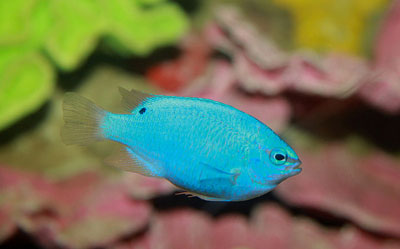| Jan 05, 2012 |
Bioinspired materials for the next generation of photonic crystals
|
|
(Nanowerk News) Nature's ability to actively control color has led scientists to integrate structural color into the design of modern technologies. But how do scientists accurately mimic nature for such applications?
|
|
Hiroshi Fudouzi at National Institute for Materials Science (NIMS) in Japan describes the challenges facing materials scientists for the realization of photonic crystals based on design of bioinspired structural color.
|
|
The review paper, published in Science and Technology of Advanced Materials ("Tunable structural color in organisms and photonic materials for design of bioinspired materials"), focuses on active structural color and covers the following aspects of structural color:
|
 |
| Blue damselfish that can reversibly change their color. (Copyright : Brian Gratwicke (Creative Commons 2.0))
|
|
Tunable structural color in nature
|
|
The physical mechanisms and role of refractive index can be considered by looking at the South American tropical fish known as 'Neon Tetra' which capable of changing color from green in the daytime to violet-blue at night.
|
|
Bioinspired materials for tunable structural materials
|
|
Mathematical models describe the reflection of light from 1D multilayers and 3D colloidal crystals. Specific examples include layer-by-layer synthesis of polymer-based Bragg reflectors; electrochemical tunable color of block copolymers between red and green; and stress/stain induced changes in the color hydrogel membrane from red to blue.
|
|
3D colloidal crystals and tunable structural color in opal composites
|
|
Opal is an example of a 3D photonic crystal with well understood diffraction properties. This section focuses on synthetic opal structures synthesized using 3D nanostructures of monodispersed polystyrene particles on silicon substrates; a highly stable new soft material consisting of a colloidal crystal embedded in a poly(N-isopropylacrylamide) hydrogel whose diffracted wavelength is thermally tunable across the entire visible spectrum; and recent reports on tuning the color of hydrogels by magnetic fields.
|
|
Outlook
|
|
In the final section, Fudouzi describes technology produced by 'bioinspired approaches for the design of photonic materials'. Examples include a 3D opal photonic crystal- humidity sensor—color changes from blue to red at high humidity—based on nanoporous structure of the Hercules beetle. A high-performance optical gas sensor with a highly selective response based on Morpho butterfly wings and new, more complex materials design such gyroid and related phases.
|
|
This timely and highly informative review on bioinspired materials for photonic crystals includes 7 figures and 95 references.
|

